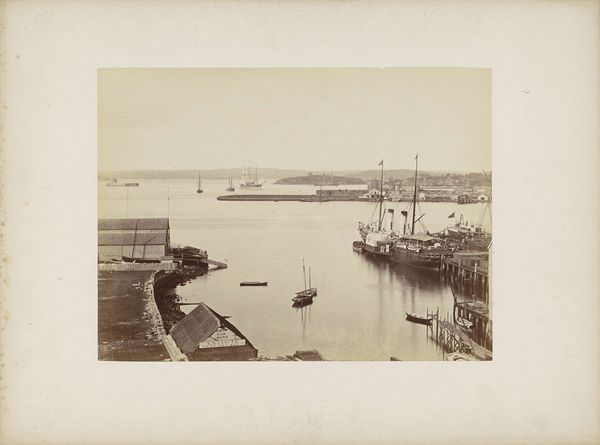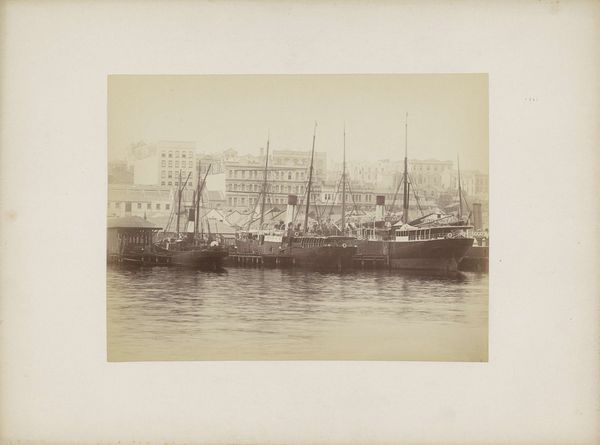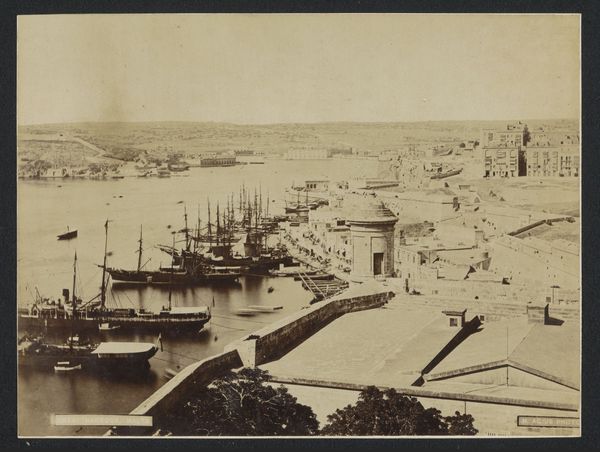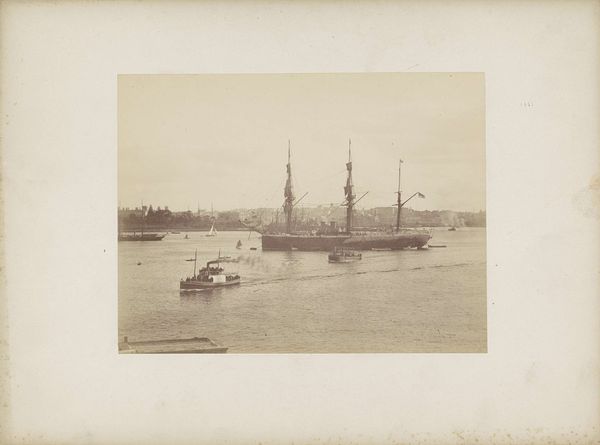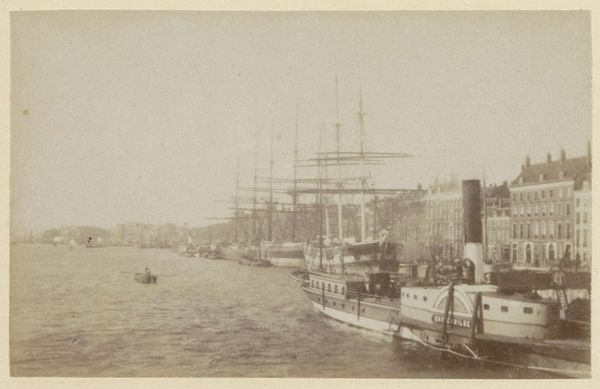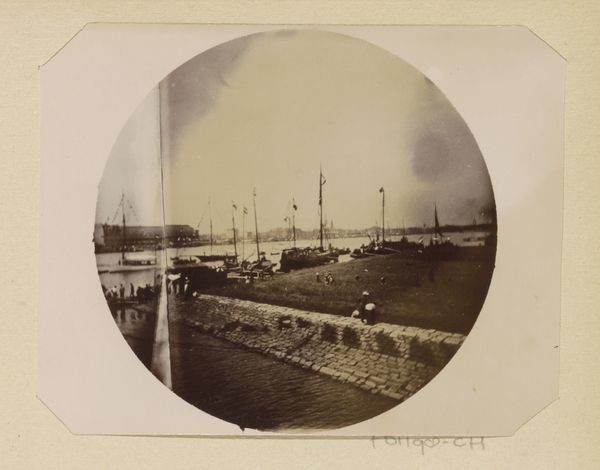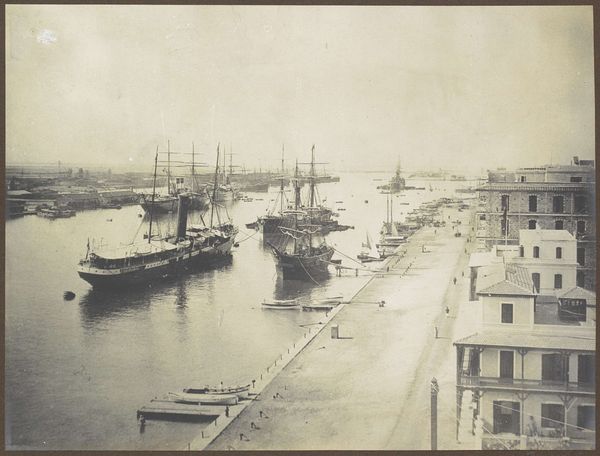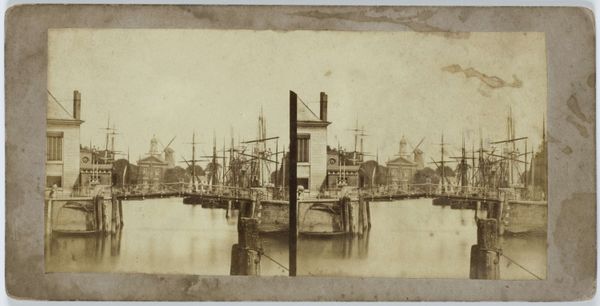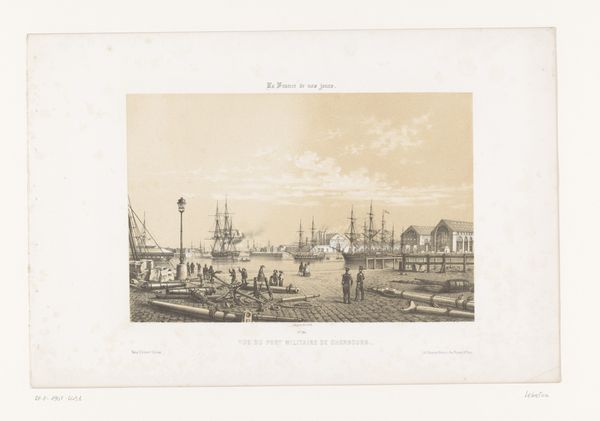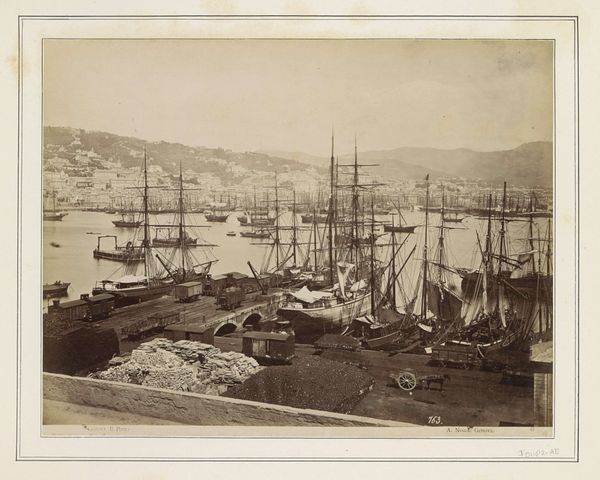
photography, gelatin-silver-print
#
aged paper
#
ship
#
pictorialism
#
light coloured
#
landscape
#
photography
#
gelatin-silver-print
#
19th century
#
cityscape
Dimensions: height 241 mm, width 324 mm
Copyright: Rijks Museum: Open Domain
This photograph of a harbor, possibly Sydney, was captured by Charles Bayliss using a process dependent on light-sensitive chemistry. What we see here is not just an image, but the result of labor-intensive processes. Each print required careful preparation of glass plates, precise timing in the camera, and skilled development in the darkroom. Look closely, and you'll see the unique tonal range achieved with the albumen print – a process where paper is coated with egg white to create a smooth surface for the photographic emulsion. The very act of photography in the 19th century was intertwined with the industrial revolution. The production of photographic materials relied on factories and chemical expertise. And of course, consider the scene itself: a bustling harbor, full of ships connecting continents, moving people and goods in the age of global expansion. The photograph asks us to consider how technological innovations like photography were shaping our perceptions of the world, and how these are tied to wider social issues of labor, politics, and consumption. Ultimately, understanding the photograph's materiality invites us to challenge conventional boundaries between art and craft, and to appreciate the rich social context embedded in every image.
Comments
No comments
Be the first to comment and join the conversation on the ultimate creative platform.
